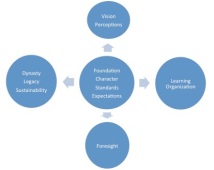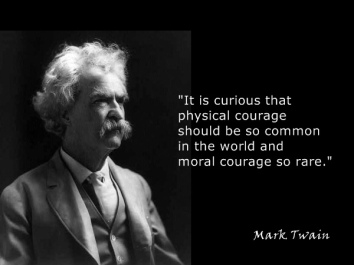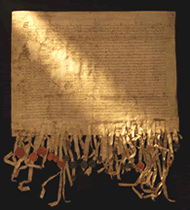Early on in my Navy career it was drummed into my head that the Navy’s Number 1 leadership tenant was to “Take Care of your People.” However, no one ever told us how to go about this leadership principle or practice. Nor was it really intently explained what was involved in this process.
What does it mean to you? How do you take care of your people?
People are different is many ways, how can one possibly take care of all of them equally as you lead them through their life’s purpose, vision and goals?
In his article in Ethics for the Junior Officers, Navy Chaplain Captain Arnold E. Resnicoff says that we can use the Golden Rule as a guideline. He cites a Navy Bureau of Medicine concept called “T.E.A.M.” – “Treat Everyone As Me.” Following the Golden Rule – Treat everyone as you would want to be treated – he teaches that when followed, it can help develop an ethical framework for dealing with people we lead.
The common response is that all people are not religious, and that there are so many different religions, that this concept simply will not apply in all situations.
simply will not apply in all situations.
Conversely, Karen Armstrong, in her TED Talk “Let’s revive the Golden Rule” believes it is the only way to save the world. She points out that all the world’s religions have their own version of the Golden Rule. The accompanying graphic depicts her point.
Captain Resnicoff further points out its importance with two other illustrations:
1. Muslin teacher and mystic Al-Ghazali had this in mind when he taught that we refrain from lying by imagining how we feel when someone else lies to us; and
2. When Confucius was asked what principle could guide all conduct, he answered “reciprocity.” In other words, that we should not do unto others what we would not want them to do to us.
Leadership and the practice of the Golden Rule
In order to adequately take care of your people, one must determine what are their needs to make them better leaders in their own right, while improving their performance and contribution to the organization in which you both collaborate each day.
So what are those needs? Think about your own situation as a new employee in a new organization. What are some your personal needs for your personal and professional growth; needs that make you a better employee, person and make a difference – significant impact – in your current experience?
Based on my own personal career experiences, and on my leadership experience and education, here are a few that come to mind.
Vision – Mission – Goals. Nearly every leadership pundit I have read will tell you of the importance of creating organizational vision, mission and goals. Dr. Timothy Bednarz, in his book Great: What Makes Leaders Great, speaks to it first in the specific findings of his research, as well as in creating an impact. Gordon D’Angelo’s, in his book VISION: Your Pathway to Victory, outlines in detail the steps to creating personal and organizational vision, mission and SMART Goals for success.
organizational vision, mission and goals. Dr. Timothy Bednarz, in his book Great: What Makes Leaders Great, speaks to it first in the specific findings of his research, as well as in creating an impact. Gordon D’Angelo’s, in his book VISION: Your Pathway to Victory, outlines in detail the steps to creating personal and organizational vision, mission and SMART Goals for success.
Organizational Standards and Values. The Leadership Bible: Leadership Principles from God’s Word, identifies the steps to follow by any learning organization: Standards; Instruction; Practice; Feedback; and Release. Without standards in which to measure behavioral and performance, the remaining four steps are hard to follow. Again referring to Dr. Bednarz, his second finding and aspect of making an impact, personal and organizational values in integrity, personal convictions to do the right thing, and work ethics.
Building Personal Relationships. People don’t care how much you know, until they know how you care. You demonstrate that “caring and compassion” through the work and personal relationships you build with those with whom you work. Take a personal interest in them, their families, their knowledge, their passion for success, and their value system. Encourage them to align their personal values and goals with those of the organization. This doesn’t mean you give them special privileges and overlook behavioral anomalies. You hold them to the expected standards and mentor accordingly.
Professional Growth. Training! Training! Training! Teach them all you know about their job in order to replicate yourself. Develop their leadership so that they can develop other leaders. Empower them to make conscious decisions for the good of the organization and their own growth.
Understanding the Law of Service. Hermann Hesse, in his book Journey to the East, tells the story of Leo, who lives by the Law of Service, which states “He who wishes to live long must serve, but he who wishes to rule does not live long.” Leaders must be committed to the growth of their people, putting them first in their leadership.
Robert Greenleaf, the founder of Servant Leadership, says leaders must believe in the intrinsic value of people and that he/she must recognize their responsibility to serving the personal, professional and spiritual growth of everyone. Mike Frank, motivational speaker of Speakers Unlimited speaks of it in terms of Leadership Pride: Personal Responsibility In Developing Excellence. There are many “E” words that can be used in the place of excellence, all under the heading of “serving” others.
Person of Character; Leading with Moral Authority; Putting people first. These three practices are taken from James W. Sipe and Don M. Frick book, Seven Pillars of Servant Leadership.
As a Person of Character, you are ethical and principle-centered in your leadership; honest, trustworthy, and humble. You lead by consciousness of the welfare of others, not by ego because of your position. You are maintain your integrity and serve a higher purpose.
As a Person who Leads with Moral Authority, you are worthy of respect, inspiring trust and confidence, while you establish quality standards of performance. You do the right thing, because it is the right thing to do. You empower others, mentoring them to perform to standards and counseling them when veering right or left of those standards.
As a Person who Puts People First – Before Self, you are concerned about your people performing to their highest capabilities. You display a servant’s heart; you are mentor-minded; and you show a care and concern for the growth of your people.
The Golden Rule of Leadership says “Lead others the way you would want others to lead you.” The concepts above certainly outline esteemed methods of leading others, creating highly esteemed leadership who put others first for everyone’s productive personal and professional growth.
Do you use any of these principles and practice each of the daily in your leadership of others? Are you “Taking Care of your People” with a holistic passion toward improving them and making a difference in their lives? The references provided above provide other practices to help you take care of your people, making them better employees, and better future leaders.
Only you can answer these probing questions.
I am interested in and thank you in advance for your feedback.



 n?
n? nsequences, and decision making practices for full and complete understanding.
nsequences, and decision making practices for full and complete understanding.











 Until recently, courage meant physical courage only, with little consideration for the moral or ethical aspects of the behavior. Saving a person’s life meant placing one’s self in danger with the possibility of sacrificing one’s life to save another person. In the military, such action is sometimes recognized with the awarding of the Medal of Honor for valor above and beyond the call of ordinary duty.
Until recently, courage meant physical courage only, with little consideration for the moral or ethical aspects of the behavior. Saving a person’s life meant placing one’s self in danger with the possibility of sacrificing one’s life to save another person. In the military, such action is sometimes recognized with the awarding of the Medal of Honor for valor above and beyond the call of ordinary duty.







